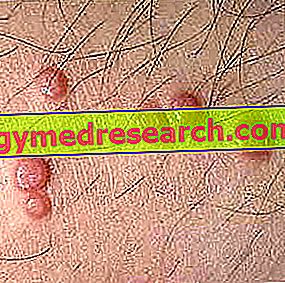Edited by Alessandro De Vettor
For those who follow our online outings with some consistency, the fact that there is a fundamental and two-way relationship between hormonal response and training should now be a given. This is all the more true in the context of female training, given that women are more susceptible to cyclic hormonal changes than men. In previous articles we have already discussed the importance of a training calibrated on the biotypological characteristics of the subject, be it android or ginoid. In this appointment we will instead focus on a previous phase.

Regardless of the suit of belonging, in fact (Ginoid Venous / Arterial / Mixed / Hormonal and Nervous Android / Atherogenic, Food / Sedentary Constitutional) it is always recommended to undergo a series of analysis and instrumental assessments essential for the development of the work plan.
The proposed exams correspond to those theoretically necessary for the optimization of the training program. We know, however, that in practice only a minority of subjects is interested / willing to undergo something that goes beyond the simple medical examination to establish suitability for sports. That said, if you wanted to proceed with the tests, you should remember the necessary collaboration and prescription from a specialist doctor, who can also assist us in the interpretation of the results.
The first objective will be to verify the existence of those pathologies or syndromes typically associated with the android or gynoid woman.
An association with abdominal fat, metabolic syndrome, or insulin resistance has often been found in the Android subject. In the Ginoid biotype, a close correlation emerged between the ovarian polycystosis, insulin resistance and metabolic disorders.
The metabolic syndrome is widely described within the portal, to which we refer all interested readers for further information. Here we focus briefly on polycystic ovaries (PCOS Polycystic Ovary Syndrome), which is instead the most common form of "hyperandrogenism (increased production of androgens) ovarian".
PCOS manifests itself with increased production of androstenedione and ovarian testosterone, and is often accompanied by menstrual irregularities (usually oligomenorrhea, infrequently amenorrhea) and other symptoms that can alter the metabolism. However, it should be emphasized that the possible occurrence of polycystic ovaries does not automatically determine the presence of the associated syndrome (PCOS), as this condition can also be found in completely healthy women. Precisely for this reason it is necessary, through specific tests, to establish the presence or absence of PCOS or other common forms of hyperandrogenism, such as the idiopathic type (which also presents an increased production of androgens, but without menstrual disorders, polycystic ovaries and metabolic alterations).
Below is the list of recommended medical histories:
BIA (bioimpedentiometry ): allows the study of body composition identifying cellular hydration (total water, intra-extra cellular), lean mass, fat mass and other information on the subject's state of physical and cellular wellbeing. ( Medical prescription is not required for this test).
COMPUTERIZED or CONTACT THERMOGRAPHY : women, especially ginoids, tend to have widespread imperfections on the buttocks, legs and sometimes on specific areas of the upper limbs. This condition is often caused by the edematous state of the subject. The thermography allows to verify the stage of PEFS (panniculopatia-edemato-fibro-sclerotica) and, according to its degree and extension, to undertake a targeted treatment of the interested areas. ( Medical prescription is not required).
ECO-DOPPLER (venous-arterial) of the lower limbs: useful for controlling blood circulation and vascular and arterial vascular changes. This, for any ginoid type, is important to understand the state of circulatory function but above all to decide the initial work approach. ( Need for medical prescription).
HEMATIC-CLINICAL-HORMONAL ANALYSIS: These analyzes allow to know the hormonal status of the subjects, android or ginoid, which, as mentioned, often present altered hormonal profiles. ( Need a medical prescription).
To check are the levels of:
DHEA (involved in the processes of aging, regulator of lipid, glycidic, protein metabolism, and glycemic regulator)
17-Β Estradiol
Progesterone
Prolactin
Aldosterone (regulator of sodium and potassium concentration in the blood )
Cortisol (hyperglycaemic hormone)
FSH (gonadal function)
LH (gonadal function)
SHBG (hyperandrogenism evaluation)
Total and Free Testosterone (hyperandrogenism evaluation)
T4 - T3 - TSH (thyroid function and metabolism regulators)
HEMATO-CLINICAL-GENERAL ANALYSIS: these, in addition to providing indications on the general state of health, help to understand some metabolic aspects and to identify the presence or absence of possible situations such as Metabolic Syndrome, Insulin-Resistance Syndrome, Hypercholesterolemia, Hyperglycemia (. ..). ( require medical prescription)
Blood exam completed
Fasting insulinemia
Fasting blood sugar
Glycosylated hemoglobin
Triglycerides
Electrolytes (sodium, potassium, calcium, magnesium, phosphorus)
Cholesterol
HDL - LDL
GOT - GPT (Gamma GT)
Creatinine
C-reactive protein
Urinalysis with particular reference to "urinary pH" and "Specific weight of urine".
These assessments must be repeated periodically during the annual work planning (Macrocycle).
For the gynoid subject, the temporal scan includes:
The BIA after each mesocycle (a mesocycle means a period of time ranging from three to five or more weeks of specific training) to assess improvements in body composition and eventually change the work approach.
THERMOGRAPHY every 2 mesociles to verify the edematous state of the subject and possible improvements of the microcirculation. Towards and in the summer period a check is recommended at the end of each mesocycle
ECO-DOPPLER at the beginning of the macrocycle and at the end of the work period to evaluate improvements in the vascular status.
HEMATIC-HORMONAL ANALYSIS at the end of the 4th and 8th mesocycle, preferably not carried out close to or during the days of the menstrual cycle
GENERAL ANALYSIS and URINE ANALYSIS every 3 mesocycles of training.
For the Android biotype, it is sufficient to perform the BIA at the end of each mesocycle and the hormonal and general hemato-clinical analyzes at least 2 times within the annual work macrocyle.



